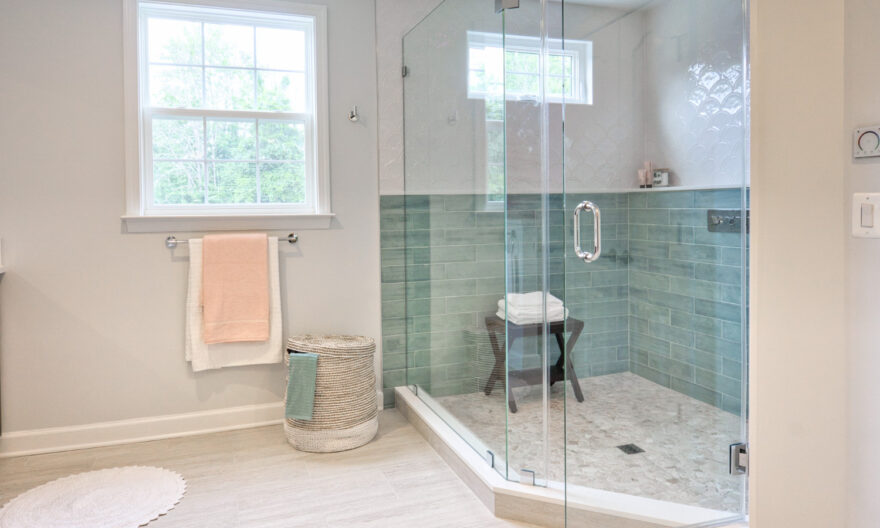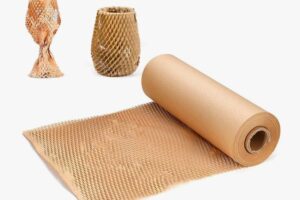
Ensuring privacy in your toilet is a fundamental concern for many homeowners. If you’re looking for ways to enhance the privacy of your toilet door, you’re in the right place. In this blog, we’ll explore several practical solutions to help make your bathroom door more private without compromising on aesthetics or functionality.
1. Install a Solid-Core Door
What is it? Solid-core doors are denser and heavier than hollow-core doors, making them more effective at soundproofing and ensuring privacy.
Why use it? These doors minimize sound leakage, giving you added privacy.
How to install it? You can hire a professional or follow DIY instructions if you’re handy with tools. It’s a long-lasting investment for better privacy.
2. Use Soundproofing Materials
Why soundproofing? Soundproofing materials help block noise from entering or leaving the bathroom, which is essential for privacy.
Popular options: Foam strips, rubber seals, and weather stripping are common materials used to soundproof doors.
Where to apply? Install soundproofing materials around the edges of the door and door frame for maximum effectiveness.
3. Add a Door Sweep
What does it do? A door sweep covers the gap between the bottom of the door and the floor, preventing sound and light from leaking through.
Why it’s effective? It’s an affordable and simple addition that can significantly reduce noise and light transmission.
How to install it? You can easily attach it with screws or adhesive strips to the bottom of your door.
4. Apply Frosted Window Film
What is it? Frosted window film is a self-adhesive film applied to glass panels to let in the light but make them impossible to see through.
Perfect for glass doors: In case there are glass panes in the toilet door, applying frosted film is a good idea to add privacy.
How to apply? Cut the film to size and apply it carefully to clean dry glass surfaces.
5. Hang a Curtain or Blind
Why use curtains or blinds? Adding a fabric curtain or blind over a door window or around a glass panel door adds an extra layer of privacy.
How to choose? Opt for blackout or thick fabric curtains for maximum privacy.
Installation tips: You can use a tension rod or hooks to easily hang curtains, making it a non-permanent and adjustable solution.
6. Replace Glass Panels with Opaque Glass
Why replace glass? Opaque or frosted glass panels are excellent at providing privacy while still allowing light into the room.
Benefits: This option offers a more permanent solution compared to window films or curtains.
Installation: Consider hiring a professional to replace the glass panels if you’re looking for a more polished finish.
7. Install a Locking Mechanism
Why it matters: Privacy isn’t just about sound and visibility; feeling secure in the bathroom is important.
Best options: Look for high-quality locks such as deadbolts, slide bolts, or smart locks that offer secure privacy.
Installation process: You can install most locks with basic tools like a screwdriver or drill, but it’s always a good idea to consult a professional for complex installations.
8. Add Door Seal Strips
What are they? Door seal strips are designed to cover the gaps around the door to prevent sound, light, and air from passing through.
Why they work: They are especially effective for enhancing soundproofing and minimizing light leakage, both of which contribute to a more private bathroom experience.
How to apply? Simply peel and stick the adhesive-backed strips along the edges of the door.
9. Use Acoustic Panels on the Door
Why acoustic panels? These are designed to absorb sound, preventing noise from escaping or entering the bathroom.
Placement: You can install them directly on the door or nearby walls for enhanced privacy.
Installation tips: Some acoustic panels come with adhesive backing, making them easy to install without the need for professional help.
10. Upgrade to a Sliding Door with Better Privacy Features
Why sliding doors? Sliding doors often leave gaps that compromise privacy, but modern designs can help resolve this issue.
Considerations: Look for sliding doors with minimal gaps or install sealing strips to cover the gaps.
Professional installation: Due to their complexity, sliding doors are best installed by professionals to ensure they are properly aligned and sealed.
11. Use Curtains or Room Dividers Outside the Door
Why use room dividers? Adding an extra layer of separation between the toilet door and other areas can increase the feeling of privacy.
Curtains as a divider: Hanging curtains or using a portable room divider can create a physical barrier, offering additional privacy without making permanent changes to the door itself.
Easy to set up: Curtains and dividers are non-invasive and easy to move around, making them flexible solutions for privacy concerns.
12. Install a Door Threshold
What is it? A door threshold is a strip placed beneath the door to reduce gaps at the bottom.
Benefits: This helps block out light, drafts, and noise, contributing to a more private environment.
How to install it? Measure the gap beneath your door and install the appropriate-sized threshold using screws or adhesive.
13. Paint the Door with Soundproof Paint
Why soundproof paint? Special soundproofing paint contains sound-absorbing materials that can help reduce noise transmission.
Effective for privacy: While not as effective as soundproof panels, this paint provides a subtle improvement in privacy.
Application: Apply it like regular paint, with several coats providing better soundproofing effects.
14. Use Double-Layered Doors
Why double-layered doors? These are double-layered material doors, thus providing more sound insulation and more privacy, in comparison to regular doors.
Benefit: Makes for a much quieter bathroom environment with more privacy, given higher density and enhanced sound absorption.
Considerations: A little more money, but double doors are cool because of privacy.
Conclusion
Improving the privacy of your toilet door can never be at stake anymore, and it is not majorly required to do with a huge investment. From easy ones such as sticking door sweeps and soundproofing strips to the more advanced ones like replacing your current door with a solid-core or double-layered one, there are scores of possibilities to improve the privacy in your bathroom. By piecing together a few of the above tips, you can create far more a secure and private setting at home.
As you create these changes, make sure it remains faithful to the holistic view of your house, both in form and function. Choose wisely to enjoy privacy without compromise, either in style or functionality.




